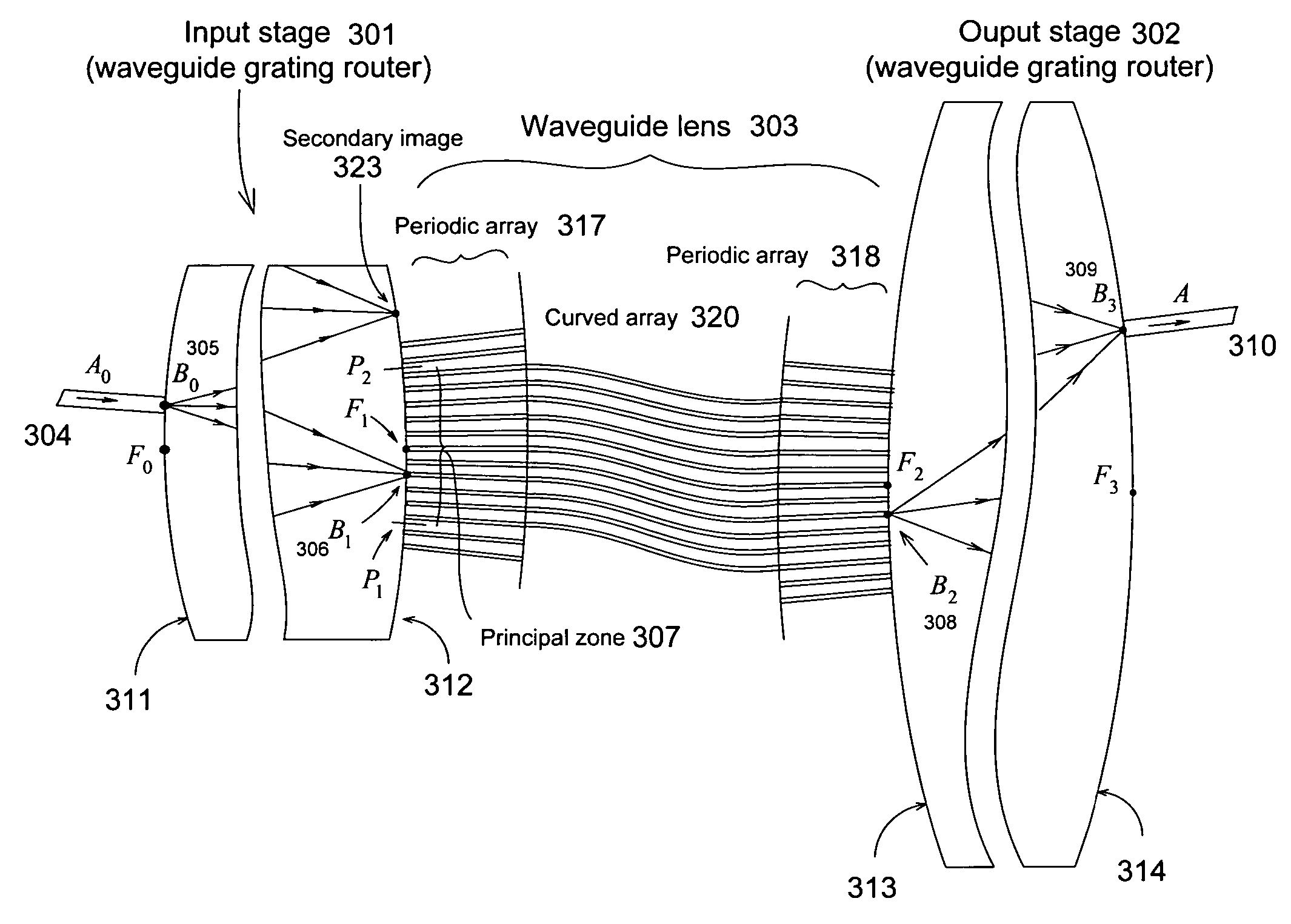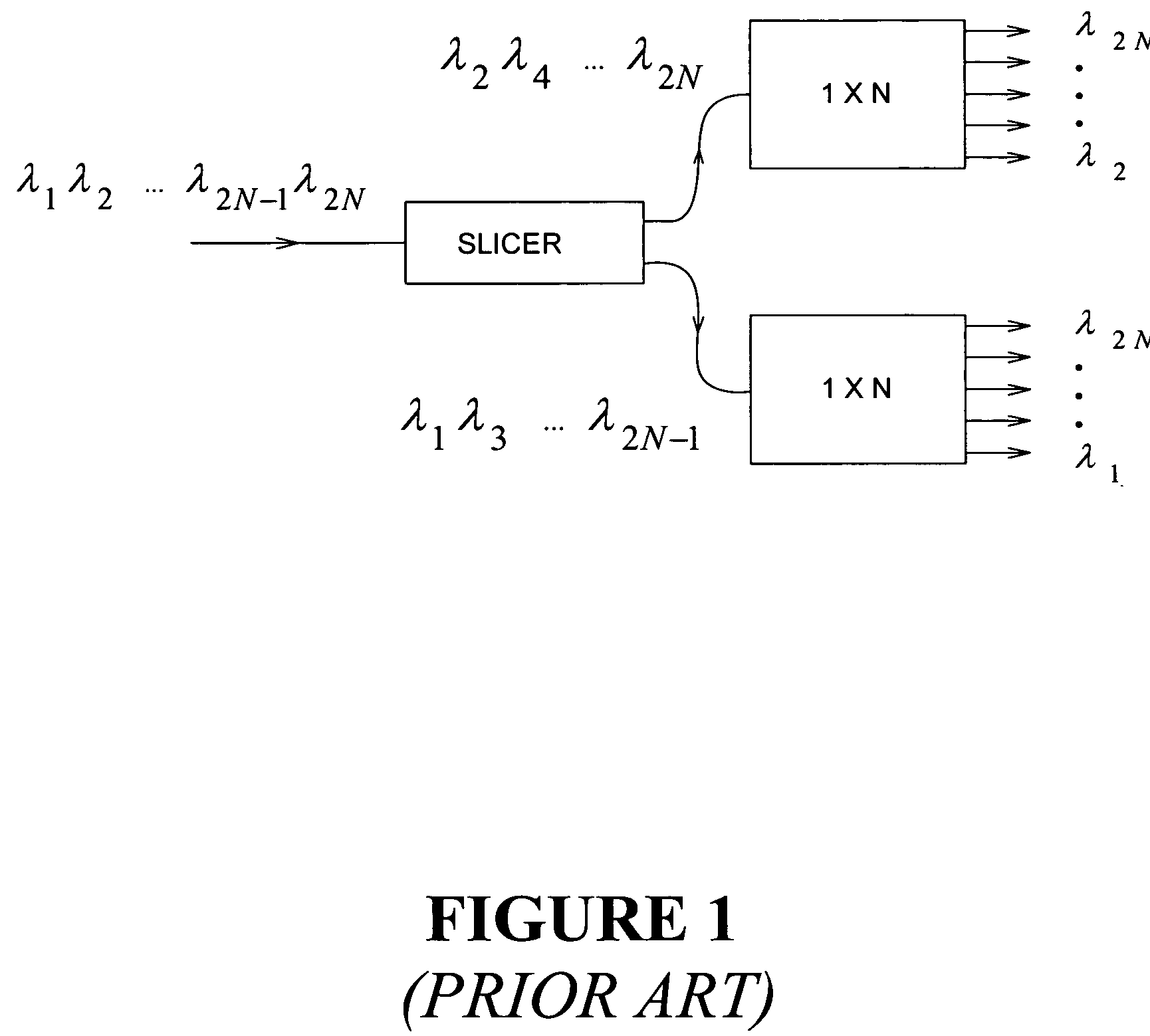Optical router using stationary imaging
a stationary imaging and optical router technology, applied in the field of optical filters, can solve the problems of large size of each grating as compared to a conventional grating, affecting substantial loss variation, and difficult to realize, so as to reduce crosstalk and improve efficiency.
- Summary
- Abstract
- Description
- Claims
- Application Information
AI Technical Summary
Benefits of technology
Problems solved by technology
Method used
Image
Examples
Embodiment Construction
[0022]In the following description, identical element designations in different figures represent identical elements. Additionally in the element designations, the first digit refers to the figure in which that element is first located (e.g., 201 is first located in FIG. 2).
Router Description
[0023]An important function that must be provided in high quality optical networks is that of wavelength multiplexing and demultiplexing. In particular, channel adding / dropping filters are needed at each node to combine and separate different wavelength channels. Typically the filter must have rectangular wavelength response, with negligible loss in the passbands, and high rejection in the stopbands.
[0024]These properties are currently realized in two stages, by first dividing the input channels
λ1, λ2, λ3, λ4, . . . , λ2N−1, λ2N
in two separate sets λ1, λ3, . . . , λ2N−1 and λ2, λ4, . . . , λ2N, respectively including the even and odd channels. Then, in the second stage, the N channels of each se...
PUM
 Login to View More
Login to View More Abstract
Description
Claims
Application Information
 Login to View More
Login to View More - R&D
- Intellectual Property
- Life Sciences
- Materials
- Tech Scout
- Unparalleled Data Quality
- Higher Quality Content
- 60% Fewer Hallucinations
Browse by: Latest US Patents, China's latest patents, Technical Efficacy Thesaurus, Application Domain, Technology Topic, Popular Technical Reports.
© 2025 PatSnap. All rights reserved.Legal|Privacy policy|Modern Slavery Act Transparency Statement|Sitemap|About US| Contact US: help@patsnap.com



